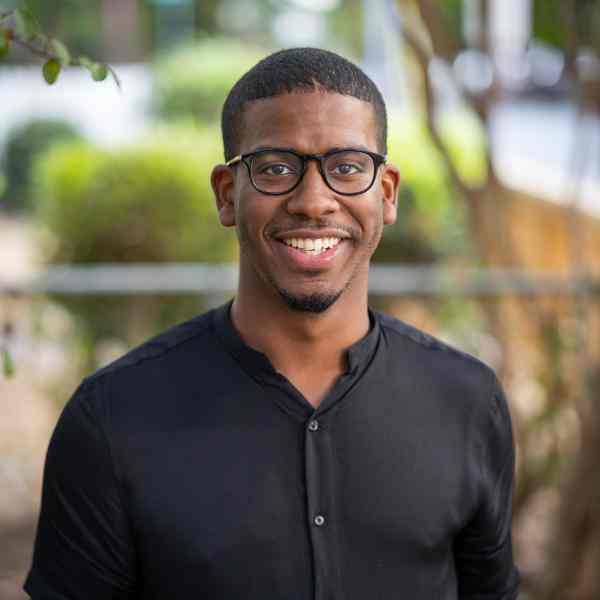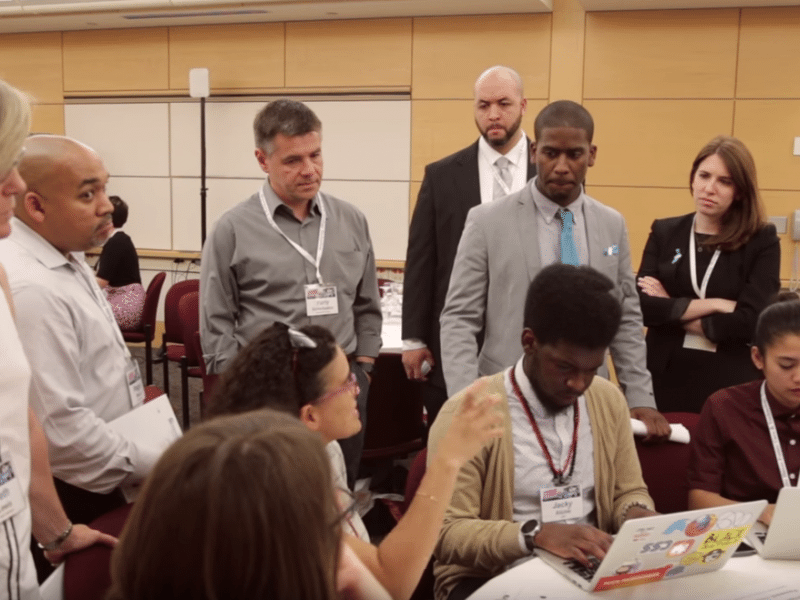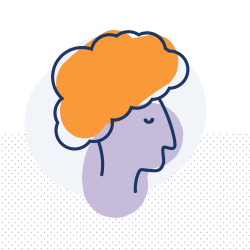Introduction
By transforming the way thousands of young people age out of foster care, Sixto Cancel is transforming the overall child welfare and foster care system itself. He’s doing this by hacking the case management system to not only put young people in charge, but to use the data he gleans from successful experiences and in general to help improve and transform the roles of professionals across these systems, too.
The New Idea
Sixto Cancel is working to reimagine the way the foster care system interacts with the children in its care, transforming the current model, where youth who “age out” without families in place are expected to achieve independence according to plans set for them by their social workers without their input. These young people are not being set up for success, and experience high rates of poverty and homelessness and low rates of educational attainment. Sixto, who himself grew up in foster care, is building technology that casts young people as the authors of their own transition to adulthood and connects them with resources, their professional support network, and, crucially, the teachers, coaches, mentors, and family members who make up their informal support system.
Research shows that maintaining connections to caring adults makes a significant difference in these youths’ lives. This platform combines that finding with a model that gives youth agency, providing them with resources and support to pursue their own goals for independence. They choose what steps towards independence are most important to them and exactly how they want to work towards employment, housing, education, health and other key components of transition. They choose which adults they look to for support, building their own “advisory board” by recruiting from the pool of paid staff and the other adult allies in their lives. This gives them the opportunity to practice self-direction and independence, key skills for transitioning into adulthood.
This solution revamps the existing case management system using a lever that has proven to be more effective in this sector than simple policy change: software-based alterations in social workers and other professionals’ workflows. It also goes beyond providing a ladder for young people in foster care to effectively transition to adulthood. As the youth and their adult allies actively use the platform, it collects data on what they want and need, what barriers they face, what tools they use, and what solutions work for them. This data can be used by advocates to improve the system, create evidence-based programming and support, and challenge institutional biases with data. Once a model relying on youth decision-making with adult support is widespread and demonstrably improves transition outcomes at scale, the rest of the system will be compelled to take notice and consider youth-in-charge solutions for other pressing problems.
The Problem
Twenty thousand young people a year age out of foster care without family or family-like structures in place to support them. Without the support of a permanent family and resources for self-sufficiency, we see foster youth who have aged out experience many negative outcomes. 20% of foster youth will become homeless on their 18th birthday, and one in four will be homeless within six months of aging out. Fifty percent of youth who have aged out are unemployed and of those employed, half are making less than $10,000 a year. Fewer than 3% percent of foster youth are able to get a bachelor's degree. These negative outcomes amount to a cost of 7.6 billion a year. Clearly, the existing system for preparing these young people for adulthood is broken.
As Sixto points out, the experience of young people in foster care is oppressive, in that oppression can be defined as an unjust level of control exerted over a group. Youth in foster care are not given the opportunity to participate in developmentally normal activities like playing football on a school team or staying overnight at a friend’s house, due to the state’s fear of liability. Their peers are allowed to gradually take on more responsibilities and more decision-making power as part of the transition to adulthood, but they are not. Instead of learning skills for independent living, they learn patterns of behavior for living under oppressive control. As Sixto has observed, they learn to wait passively and push blame onto others. They do not learn their legal rights within the system, because nobody ever tells them what those are. This oppression and learned passivity compounds with trauma, which nearly all young people in the foster system face to a significant degree.
When they age out of the system, usually at eighteen, the situation flips. They are abruptly thrust into total independence, without having had the opportunity to practice independent decision-making through gradual steps beforehand and without the family network of supportive adults that most young people have. Learned passivity and trauma can make it difficult for aged-out youth to connect with people and to develop their stunted decision-making skills, which they need to do rapidly in order to make a successful transition to independent adulthood. These young people are in no way being set up to succeed. The system fails to prepare youth to be self-sufficient, to build a family-like support system and to heal from the trauma they have experienced.
Federal regulations require that all foster youth aging out have a transition plan. These plans are usually created by staff with little to no meaningful input from the young person him or herself, and are a missed opportunity to help young people develop the skills they will need in order to become independent.
Foster care is a huge bureaucracy and slow to change. A new administrator can change policies, requiring new checklists or deliverables, but the change stalls out when pushed onto a network of overworked and emotionally exhausted professionals. Simple things already require tremendous amounts of work. Los Angeles County alone spends two million hours of staff time a year coordinating visitation. If a youth in foster care wants to stay overnight at a friend’s house, a number of background checks must first be performed. For a young person to travel out of state, the paperwork can take many days to process, often causing young people to simply miss important events (this is how Sixto, as a teenager, missed a beloved brother’s funeral: the paperwork simply could not be processed in time). Calls for change often come across as more work for these already overloaded professionals. Solutions in this space are therefore doubly hard to come by. Not only do they need to work for the young people in the care of the state, but they need to work for the workers, too.
The Strategy
In the existing system, social workers create transition plans for youth who will be aging out, complete with goals for them to hit on the way to independence. These are created almost entirely by the social worker, with little or no input from the young people, who are not consulted on what they want independence to look like for them. On top of this, multiple case workers across multiple institutions will have their own plans (like the school’s IEP or Individualized Education Plan). Sixto’s model allows young people to have a say in setting their own goals and their own track to independence. The system connects to social workers, case managers, and teachers across agencies. Furthermore, the Think Of Us model also surrounds them with family-like supporters, so all steps do not need to be completed by the youth alone or limited to the support of the overtaxed social worker.
From the young person’s perspective, theThink Of Us Platform is an app that connects them to crucial resources as they transition out of the foster care system and to adulthood. These resources include video guides and budgeting tools, as well as the one resource that has been proven to help these youth succeed: connection to caring adults. The young people build “personal advisory boards,” made up of their social workers, teachers, coaches, mentors, and adult family and friends. On the app, they can choose which goals they want to work towards and assign advisory board members to help them with those goals. The involved adults can communicate with the youth, as well as with one another, which is rare in the foster care system where generally social workers do not communicate with the young person’s unofficial adult support system. This builds a more cohesive network of support for the young person. Locating goal setting in the hands of the young people additionally harmonizes various agencies’ plans for the young people and allows them to coordinate more effectively, saving countless hours of staff time and preventing youth from falling through the cracks between agencies.
The backbone of the foster care system is a digital case management system built in the 1990s. Sixto realized that if he could revamp this system, he could transform the sector. He has set out to build a case management system that centers youth while improving the workflow and thus lightening the load of their case managers. The current model has been built through an iterative human-centered design process, in consultation with youth currently in foster care. The platform has been piloted in California and Nebraska. Think Of Us has worked with child services in sixteen states and the federal government. They have built these relationships through a series of hackathons, design sprint challenges that bring together technologists with subject matter experts, in this case child welfare professionals and youth in foster care, in order to solve pressing problems in the field. Through these hackathons they have built tools that introduce the world of child welfare to the benefits of technology. This includes software to help Los Angeles county coordinate the four million hours of visitation its child welfare team needs to coordinate annually, and other applications designed to solve bottlenecks and barriers in the child welfare system. They have worked with both the people at the national level who design and authorize new regulations and the people at the local level who are tasked with implementing them. This leaves them uniquely well-positioned to orchestrate change.
The Think Of Us software is more than just a useful tool. Software is one of the most efficient ways of changing behavior in a field strictly controlled by rules and regulations. If a state administrator announces a new priority - like in person visits or a list of welfare-check questions asked once a month- overtaxed social workers are unlikely to implement the change quickly. On the contrary, changing the software workflow provides a forcing mechanism for behavioral change, especially if the software represents a more efficient and effective way of doing things. If the software can prompt the youth to log their concerns, that information is much more likely to reach the social worker than if the social worker has to make an appointment to come ask questions. Software is also tied to the reimbursement system, by which states access federal foster care money for achieving certain outcomes.
Sixto believes that now is a particularly urgent time for change. Though reforms swept through the foster care system in 2016, they were based on research and a plan presented in 2010, the year before groundbreaking work on adolescent neuroplasticity was published, which outline just how much the adolescent brain is still growing and developing, particularly the prefrontal cortex, which is heavily involved in decision making and impulse control. We can no longer ignore that fact that adolescents’ plastic brains need opportunities to practice independent decision making in order to grow those skills for adulthood.
The Think Of Us strategic plan for the next five years involves building a proof case for the effectiveness of the software at scale, fusing the learnings of the software with learnings about the plasticity of the adolescent brain, and then, crucially, to work with federal agencies to link using the software and its new approach to putting youth in charge to financial reimbursement for the state systems. This is a powerful lever that will compel the states to adopt the new paradigm.
Neither is the goal simply to reach the more than a hundred thousand young people preparing to age out of the system at any given time. Young adults preparing to transition to adulthood, along with infants, are the most visible area of risk for the risk-averse state foster care systems, and thus represent a key leverage point. If Sixto’s team can show that empowering those young people in transition leads to better outcomes, they will be well-positioned to push for policy and practice that empowers foster youth more broadly. By design, the app will house a wealth of data on what young people in foster care and their adult allies want and need, as well as the barriers in place between them and success. This real-time data can be used to radically transform not just the aging out process but the broader foster care system. Documenting needs and barriers is a first step towards addressing them with evidence-based solutions. This app represents an opportunity to demonstrate for the foster care system that placing youth in charge is a key component of their long-term success. It also represents a way to more closely integrate kin and informal social support into the lives of young people in foster care. These two components, especially used in concert, have the potential to bring a whole class of young people out of poverty, isolation, and hopelessness.
The Person
Sixto entered the foster care system when he was eleven months old. He was adopted at nine years old by a racist, abusive woman and had to fight to be returned to the foster care system at the age of fifteen, at one point taping a recording device to his chest to document her abuse because people didn’t believe a tall black boy’s word against a white woman’s. Back in foster care, he joined the NAACP and was elected for two terms as treasurer for his state’s youth and college division.
Concerned his low SAT scores would hinder him getting into college, Sixto founded a SAT prep program for foster youth in the region of Connecticut where he lived. People dismissed his ambition but he recruited teachers and social workers and enlisted five local nonprofits to facilitate the program, demonstrating an early talent for building partnerships. The SAT prep program was eventually funded for three years by the state.
Sixto had few hopes of getting out of foster care until he met his older brother, who worked hard while attending school and trying to save money to get his own apartment, which would qualify him to become a foster parent and take Sixto and his brother out of the system. His brother was killed shortly before attaining that goal, and soon after that, his sister was killed as well. Sixto was further reminded that the system that was designed to keep them safe and position them to thrive is broken.
Sixto says, “I was raised by policy and practice. I understand how a policy will dictate whether you get what you need or not... My entire childhood and adolescence has been filled with no, you can’t, not possible, wait your turn, the system won’t allow, you really shouldn’t, stay in your place, you think you know better and much more. Beginning at 13 I learned to take those statements as a challenge to prove otherwise.”
Sixto aged out of the foster care system at 23, after completing college, and has committed himself to reimagining and transforming both the aging out experience and the broader child welfare system.

 Tile image
Tile image Tile image
Tile image


